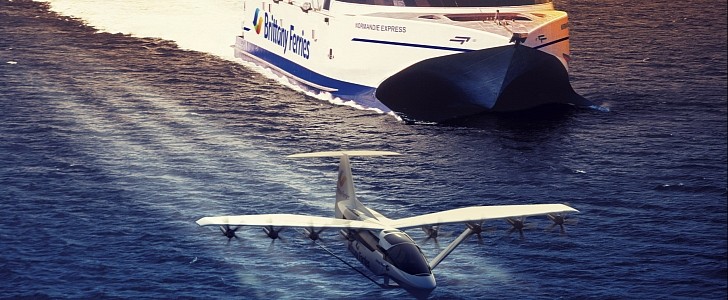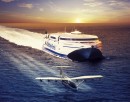Seagliders – those quirky vehicles that combine features of hydrofoils, aircraft and ferries, could soon start operating in different places around the world, including in Franco-British waters. Brittany Ferries is determined to see the Regent seaglider fly across the Channel in just a few years.
Boston-based Regent (Regional Electric Ground Effect Nautical Transport) has only recently announced that it’s developing an all-electric, high-speed ferry that can foil like a hydrofoil and fly close to the water surface, like a plane. Now, the France-based company Brittany Ferries has signed a letter of intent, with the purpose of bringing seagliders to sail between France and the UK, by 2028. Until then, smaller electric craft could become operational as soon as 2025.
This innovative mode of transport could not only significantly reduce travel time, but also reduce CO2 emissions and become even greener with time, as more of the electricity is obtained from renewable sources. With a top speed of 180 mph (290 kph) and a battery range of 180 miles (290 km), the seaglider would be 6 times faster than a standard ferry and more efficient for long distance travel.
For example, it would only take 40 minutes to get from Portsmouth (UK) to Cherbourg (France).
Technically, this unusual craft is a wing-in-ground effect vehicle (WIG), based on the concept of ground effect. The high-pressure air that is trapped between the craft’s wings and the water (or ground), when flying at low altitude, is what the seaglider rides on, when in open water.
When it sets off from the port, it rises on foils (like a hydrofoil), and then it takes off in open water, like an aircraft. The wing-mounted propellers provide the thrust needed to sea-skim at a few meters above water, and the electric motors regulate the air flow during the ride.
Although there are still technological and regulatory issues that need to be sorted out, seagliders are here to stay and in the next few years they could become a standard mode of transport.
This innovative mode of transport could not only significantly reduce travel time, but also reduce CO2 emissions and become even greener with time, as more of the electricity is obtained from renewable sources. With a top speed of 180 mph (290 kph) and a battery range of 180 miles (290 km), the seaglider would be 6 times faster than a standard ferry and more efficient for long distance travel.
For example, it would only take 40 minutes to get from Portsmouth (UK) to Cherbourg (France).
Technically, this unusual craft is a wing-in-ground effect vehicle (WIG), based on the concept of ground effect. The high-pressure air that is trapped between the craft’s wings and the water (or ground), when flying at low altitude, is what the seaglider rides on, when in open water.
When it sets off from the port, it rises on foils (like a hydrofoil), and then it takes off in open water, like an aircraft. The wing-mounted propellers provide the thrust needed to sea-skim at a few meters above water, and the electric motors regulate the air flow during the ride.
Although there are still technological and regulatory issues that need to be sorted out, seagliders are here to stay and in the next few years they could become a standard mode of transport.







